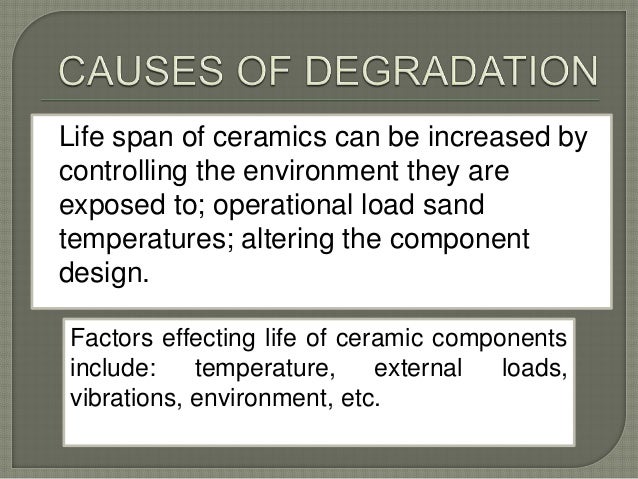A stainless steel specimens jis sus304 for the thermal shock test 30 450 13mm and for the hot corrosion test 50 50 5mm were sprayed with a metallic undercoat and ceramic top coat in a double layer.
Ceramic degradation cause.
Ated with metals ceramic materials also undergo unintentional degradation in contact with environment.
It is in the nature of all the materials used for construction to eventually degrade and deteriorate.
Exposure to temperatures that are sufficient to cause bloating melting or vaporization can change it s form.
Every case of a ceramic or glass material undergoing environmental degradation involves a specific material in a specific environment and utilized in a specific manner.
In carbon reinforced composites oxidation of matrix polymers is strongly influenced by geometry and ply orientation.
Bloating is when ceramics turn to rice bubbles like in expanded clay balls used in aquaponics and hydroponics and may o.
Accordingly there are relatively few references that try to treat the topics of ceramic and glass corrosion or environmental degradation as a general topic.
Degradation of an object occurs as a result of the interaction between the environment or with the materials that form the object however in the case of ceramics environmental factors are the major cause.
The composition of coating materials and the spraying conditions are shown in table 1 the ni 21cr 10al 0 8y wt alloy was plasma sprayed to a thickness of 100μm before the spraying of.
Generally corrosion is a system property rather than a simple material.




























